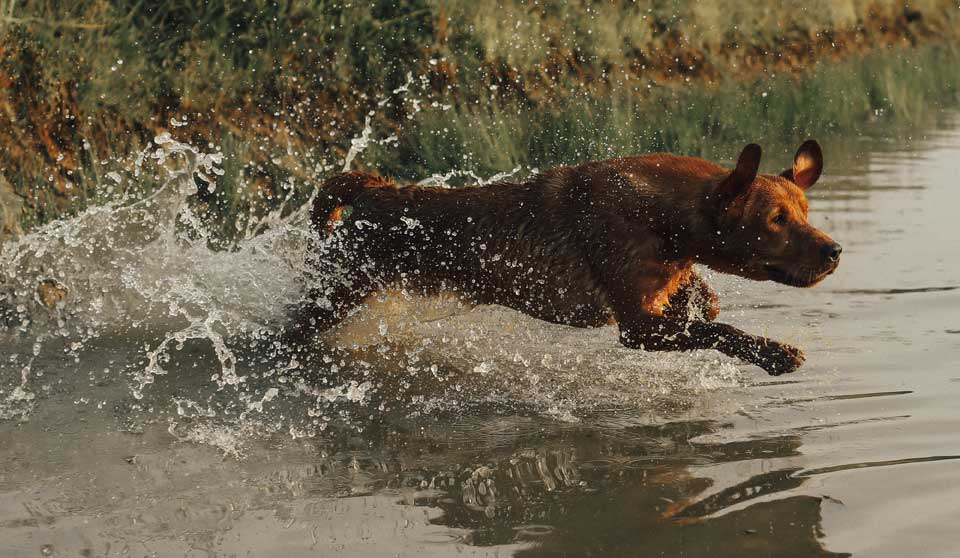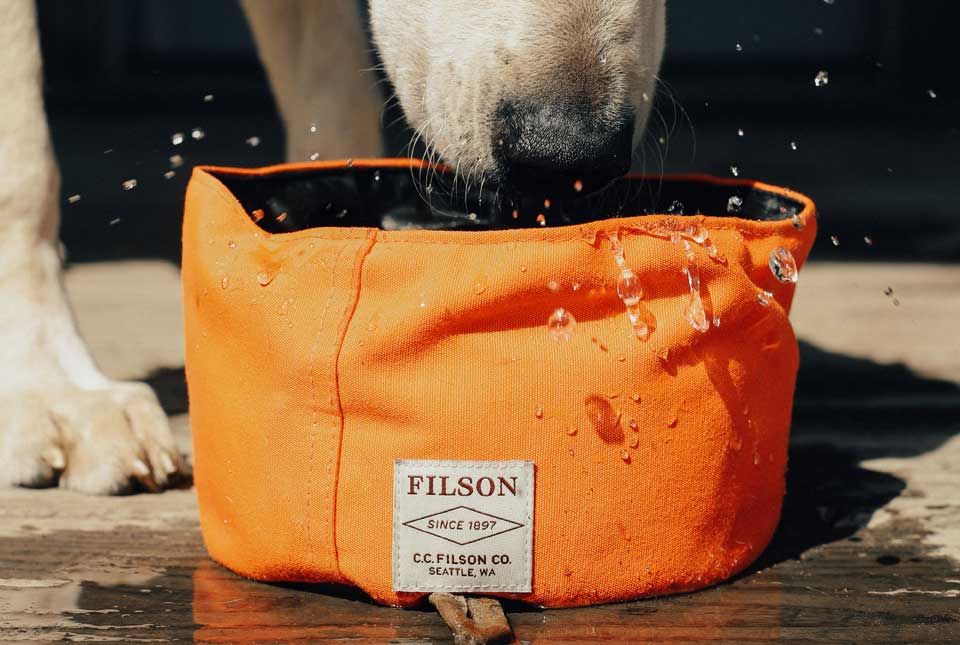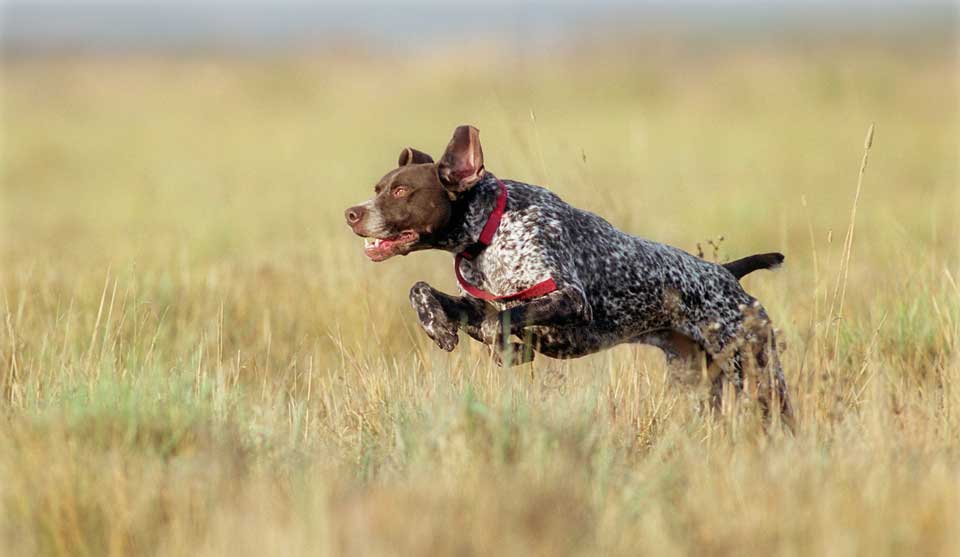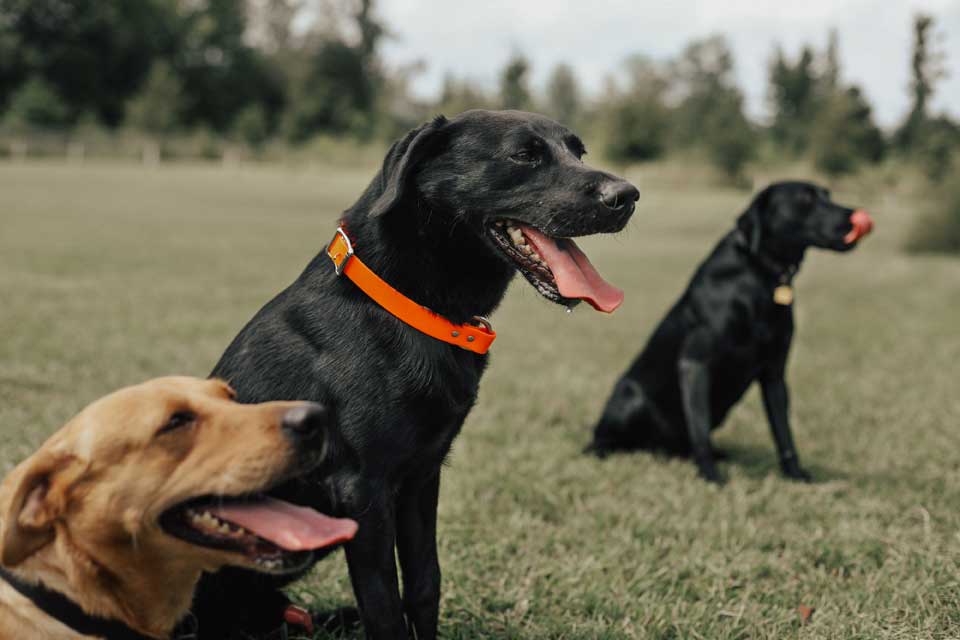Just as athletes need the right fuel to stay in great shape, so do working dogs need the right food to make sure their performance is top-notch all season long. If you’re wondering what to feed your working dog, you’ve come to the right place. Just follow these nine steps to give your canines the right dog nutrition.

Make sure your dog is actually working.
Not all working dog breeds actually burn enough energy to justify a working dog diet. If you have a boxer or a mastiff who spends their days sleeping, feeding them like a working dog will just make them fatter and lazier. Working dogs are very active and perform tasks such as hunting, herding, farming, sledding, and even law enforcement. Dogs that compete in high-activity performance shows such as racing and agility competitions also burn enough calories to be considered working dogs. (If your dogs only fit this definition part of the year, don’t worry—we’ll get more in depth on seasonal dog nutrition later on.)
Don’t neglect water.
All the best dog food in the world won’t matter if you don’t make water accessible to your dog. Dogs produce a lot of heat when they exercise, and they cool off by losing water through their mouth and the pads of their feet. Working dogs, especially those who work for long periods of time, need constant access to a clean source of water. Otherwise, they may get dehydrated, which can significantly decrease their performance. If you’re going out into the woods or slopes, pack some water for your canine as well as for yourself.

Look for the right balance of nutrients.
Just like humans, dogs require the perfect blend of protein, fat, and carbohydrates. Proteins promote muscle condition, tissue repair, and hormone synthesis. Fat provides energy that can be burned over a long period of time, which is good for endurance activities like sledding, while carbohydrates provide quick bursts of energy that can be used for racing and sprinting. The exact blend of nutrients will depend on your dog’s individual needs and how much activity they engage in, so talk to your vet about the right dog nutrition for your canine.
Watch the portion sizes.
Even the most active dog will start adding some extra fat if you consistently feed them too much. Ask your vet how much you should be feeding your dog each day, and stick to it. Communicate the feeding schedule to household members so you don’t accidentally double-feed your dogs, and don’t give into begging—most dogs do it out of boredom or because they smell something tasty, not because they’re genuinely hungry.
Consider an extra meal.
Generally speaking, dogs should only eat two meals a day, once in the morning and once in the evening. However, some exceptionally active dogs have to consume a high volume of food in order to ingest enough calories, and sometimes those portions are large enough to upset the dogs’ stomachs if they’re only split into two meals. If that’s the case for your dog, you might want to consider splitting the food across three smaller meals rather than two large ones. The smaller meals will be easier for your dog to digest, reducing stomach issues that can affect their performance.
Vary food portions seasonally if needed.
Dogs thrive on routine, and it can be hard to switch them back and forth between food brands twice (or more) per year if their activity varies seasonally—say, they hunt a lot in fall and winter, then spend most of spring and summer sleeping in the yard. However, this doesn’t mean that you shouldn’t make any changes if your dog’s activity levels aren’t consistent throughout the year. Instead, reduce the amount that you’re feeding them during the offseason so they don’t start packing on the extra pounds.

Avoid sudden changes in food.
Speaking of routine, dogs don’t respond well to drastic changes in their diet, which can cause gastrointestinal distress. If you’ve taken a look at your dog’s current food and determined that you need to make a permanent switch, don’t just throw out the old brand and start fresh. Instead, mix a small portion of the new food in with the old food. Slowly increase the percentage over the next few days until your dog is eating 100 percent of the new brand. If your dog stops eating, vomits, develops diarrhea, or exhibits any other symptoms, stop feeding them the new food and call your vet.
Don’t feed right before or after strenuous activity.
If you’ve ever eaten a big meal right before a lot of physical activity, you know how uncomfortable (and even painful) it can be to have so much food sitting in your body. The same is true for your dog, and they’ll perform much better on a half-full or even empty stomach, as opposed to right after they have eaten. Don’t feed them right after strenuous work either; give them some water right away, but let them cool down for 30-60 minutes before you bring out the food.

Read the labels.
Not all the dog food brands that are marketed as premium actually offer premium dog nutrition. Before you purchase dog food, be sure to read the label and double check that you’re actually buying food that is made with high-quality ingredients and provides the right nutrients. Real animal protein should be listed as the first ingredient in dog food: beef, venison, boar, chicken, turkey, and fish. Depending on the blend of nutrients your dog needs, you might need to seek out boutique dog food brands that offer truly premium fuel to keep your dog’s performance at peak levels. You can find these quality dog food offerings easier than you may think. Mossy Oak offers its quality, high-performance dog food brand at Dollar General.
Dogs need the right nutrition just as much as the next animal, and this is doubly true if they’re working hard. Follow these nine steps to ensure that your dogs are eating for peak working performance.




























